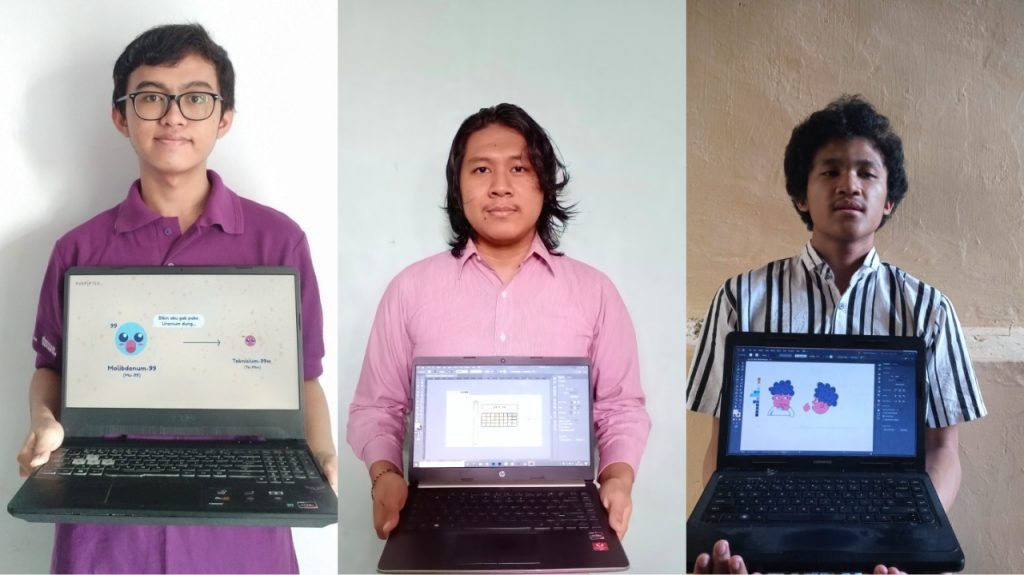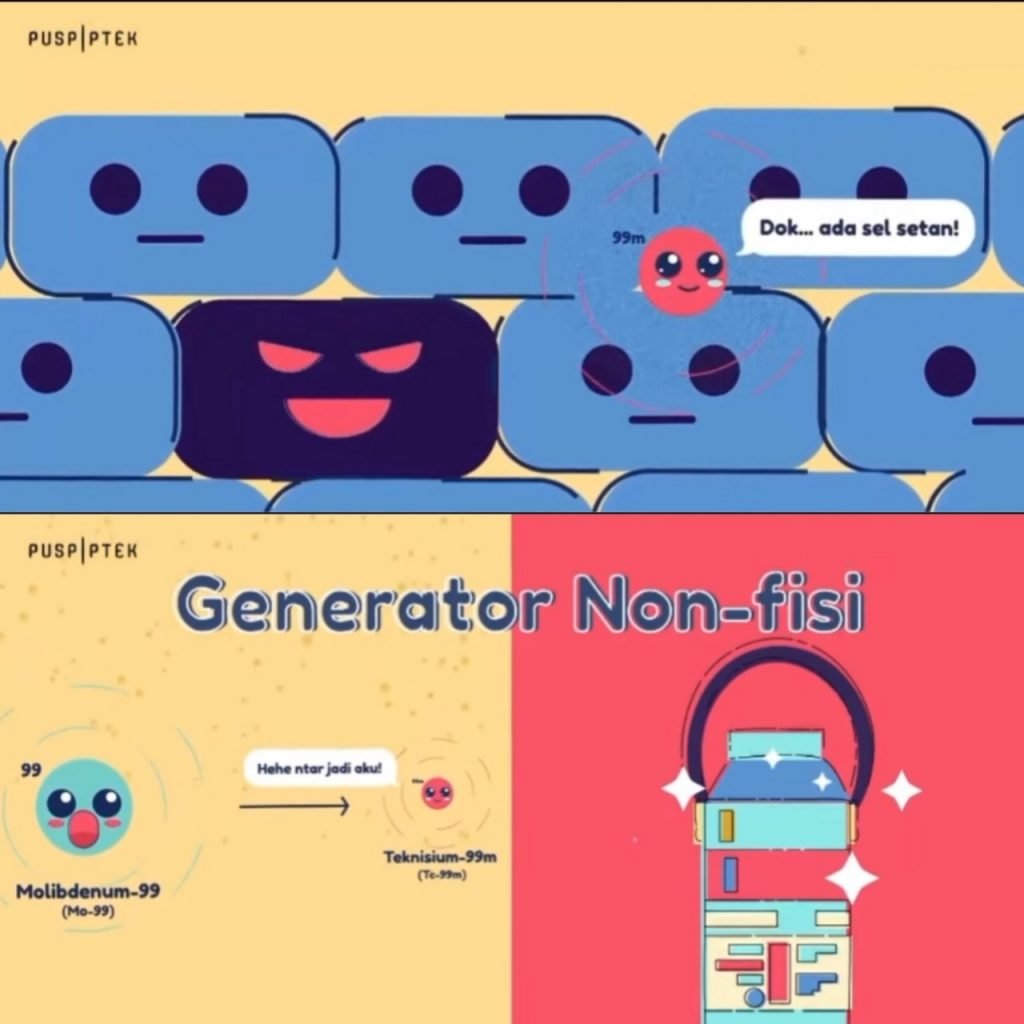Creates Educative Video, ITS Students Win Puspiptek Competition
ITS Campus, ITS News – With the number of technologies that have been developed today, educational facilities are needed to introduce the general public to these cutting-edge technologies. As was done by students of the Sepuluh Nopember Institute of Technology (ITS), won first place by making educational motion graphics videos at the Science and Technology Research Center (Puspiptek) competition, Thursday (12/11).
It was the Room 309 Team consisting of Tito Maulana, Dayyan Nasrul Haq, and Made Dwi Adistha Prana Loka Warsa succeeded in making an educational video entitled Detect Your Disease Using Tiny Technetium. This video in form of motion graphics explains the Tc-99m Non-Fission Generator technology developed by Marlina MSi, a researcher at the National Nuclear Energy Agency (Batan).
Room 309 Team representative, Tito Maulana, explained that the topic of the video was the determination of the competition organizer. To commemorate National Technology Awakening Day (Hakteknas), the topic given is in the form of cutting-edge technology that is being developed by researchers. “It so happened that Mrs. Marlina’s team was researching technetium generators, so we finally made a motion graphic about it,” he explained.

(from left) Tito Maulana, Made Dwi Adistha Prana Loka Warsa, and Dayyan Nasrul Haq showing motion graphics by the Ruang 309 team
The two-minute video describes technology in the form of a Non-Fission Technetium-99m (Tc-99m) Generator that was not previously available in Indonesia. This non-fission generator will decay Molybdenum-99 (Mo-99) was previously Mo-98 was fired with a neutron over five days to Tc-99m within 24 hours. “Tc-99m itself is a radioisotope that can diagnose various diseases in the human body,” he added.
For the videography process, continued Tito, the first thing to do is pre-production, in which the script for the video will be made. Manuscripts must be verified by a research team that has been determined by the organizing committee. Verification is needed so that the information presented in the participant’s video matches the wishes of the researcher and the reality.
Then came the production stage, where the team that consists of students from the ITS Visual Communication Design (DKV) Department adds design assets and animations that are carried out in parallel. After the production stage is complete, in the post-production stage motion graphics video is enhanced by perfecting the voice-over. “At this stage, we also add background music and sound effects,” said Tito.

A motion graphic video about the Tc-99m non-fission generator by the Ruang 309 team
According to Tito, there are several characteristics in the motion graphics created by the Ruang 309 team that makes their work different from other teams. He argues that the concept from the other team has a visual style that focuses on textural details. In contrast to their work uses a flat design and distortion lines. “After uploading it, thank God many people thought that our team had a smoother and more unique animation movement compared to other teams,” said the student from Samarinda.
There are several aspects of assessment that are considered by the judges in determining the winner of this competition. This aspect is that the content created must discuss problems and the benefits of technology, the suitability of themes, accuracy of data and information, creativity in visualizing the information, and animation techniques. “The visual style, storytelling, and the team’s skill in using animation techniques are important,” said Tito.
This young man who was born in 2001 admitted that he and his team were satisfied with their video motion graphics work. Even though the three 2019 ITS DKV students encountered various obstacles, one of which was a very short time. “All processes from pre-production to post-production are only carried out for one week,” he added.
After the competition, added Tito, Puspiptek will use the videos created by the participants for educational purposes related to the latest technological developments in Indonesia. This video is also useful for increasing the enthusiasm of the Indonesian people in innovating and supporting the work of the nation’s sons and daughters. (ri/far/ITS Public Relations)
Related News
-
ITS Supports Academic Infrastructure: New Medical Faculty Building
ITS Campus, ITS News — Entering the second year of accepting new students from the Faculty of Medicine and
November 13, 2020 18:11 -
ITS Welcomes 163 New Engineers to Empower Indonesia’s Growth
ITS Campus, ITS News – Institut Teknologi Sepuluh Nopember (ITS) continues its commitment to meeting the needs of engineers in
November 13, 2020 18:11 -
ITS Sends Off 12 Free Mudik Vehicles Ahead of Eid Al-Fitr
The dispatch of 11 bus fleets carrying ITS students for the Free Mudik ITS 2024 ITS Campus, ITS News
November 13, 2020 18:11 -
ITS Lecturer Wins 2024 Female Science Talents Intensive Tracks from Germany
Sri Fatmawati SSi MSc PhD, a lecturer at the Department of Chemistry, ITS, has emerged as the winner of
November 13, 2020 18:11
